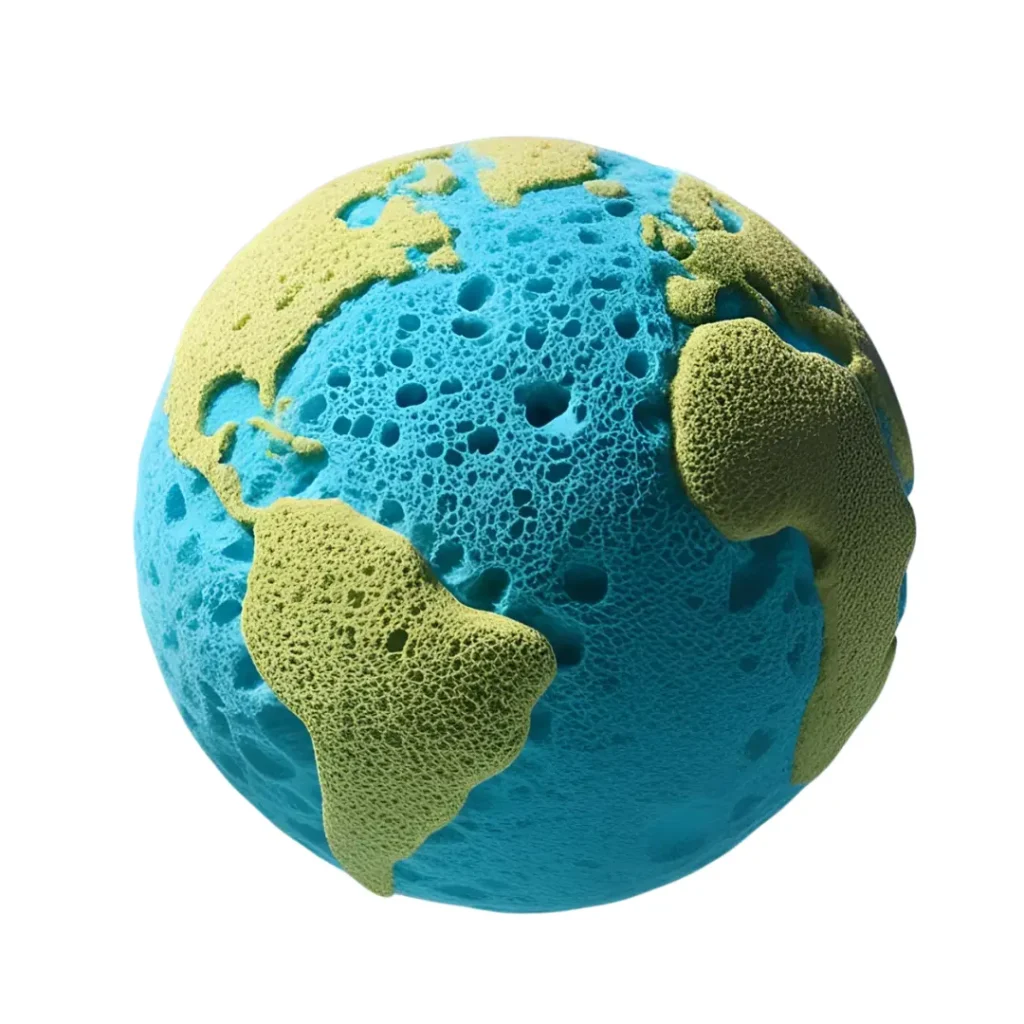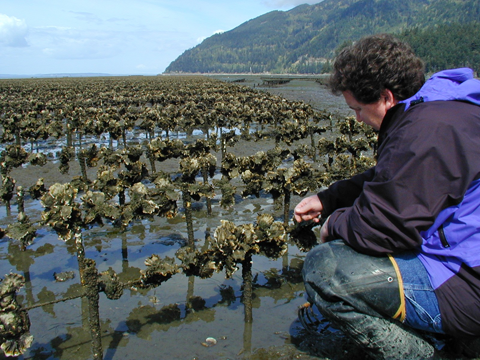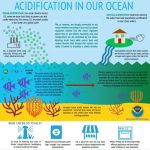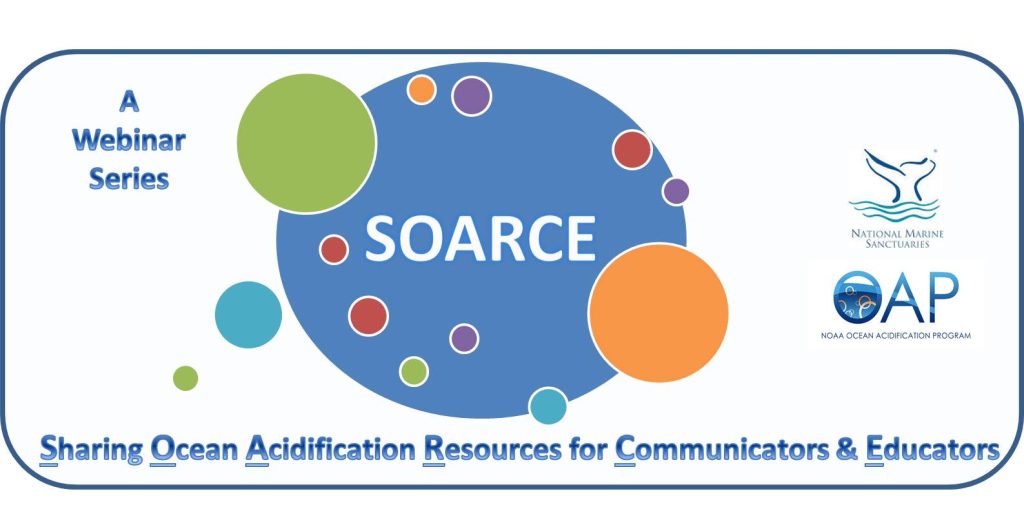Resources for Students & Educators
Education and Outreach
Education and outreach are vital to improving the public’s awareness and understanding of ocean acidification to prepare and adapt to its impacts.
Resources for Students & Educators
Education and outreach are vital to improving the public’s awareness and understanding of ocean acidification to prepare and adapt to its impacts.
OAP advances ocean acidification literacy for better decision-making
NOAA’s Ocean Acidification Program provides educational and public outreach opportunities to improve understanding of ocean acidification to students, educators and the broader public. With increased awareness of ocean and coastal acidification, communities can prepare and adapt to the consequences of our changing ocean. NOAA is legislated to facilitate national public outreach activities to improve the understanding of current scientific knowledge of ocean acidification and its impacts on marine resources.
The Ocean Acidification Program works to understand and fill the needs of the ocean acidification education and communication community.

The NOAA Ocean Acidification Implementation Plan identifies actions to extend the reach of NOAA research findings to the broader community through education and outreach. The first step was evaluating the needs in education and outreach programming to determine gaps and opportunities to strengthen ocean acidification education and communication.
OAP supported grants and NOAA activities address the goals of the implementation plan. Some efforts include developing multimedia education tools, place-based curricula and supporting community science in various U.S. regions.

Ocean and coastal acidification are complex topics. It is important to connect the dots for your audience by effectively sharing how ocean acidification occurs, what happens and its consequences and what is being done to help people prepare and adapt.
First, the ocean absorbs carbon dioxide like a sponge and this changes ocean chemistry. One consequence of changing ocean chemistry is that our ocean is increasing in acidity. Small changes can have big consequences for some marine life and people depending on them. We see those impacts now.




Climate change drives changes in our atmosphere that can then cause changes in our ocean such as warming temperatures, while ocean and coastal acidification are is directly caused by an increase in carbon dioxide in our atmosphere and from other sources. It is the changing ocean chemistry that results from the ocean absorbing carbon like a sponge.

Understand ocean acidification through interactive “choose your own adventure” game-based learning. Find easy to access game, source code, science standards, educator guide, and module integration. Geared toward students in middle school to adults.
Visit Resource >

Bring data to your classroom and learn about ocean and coastal acidification in five interactive modules incorporating the latest NOAA data to reveal the science behind ocean acidification. Students grades 9-12 can examine the connections between carbon dioxide, ocean pH, and aragonite saturation state to understand why ocean pH is changing and how it impacts marine chemistry and ecosystems.
Visit Resource >

Four module online and mobile friendly curriculum for students to experiment and learn about ocean acidification, its impacts, and actions students can take. Dive into this virtual lab and experiment with students to investigate the impacts of ocean acidification on urchin larval growth. Available in five languages with teacher resources available.
Visit Resource >

Dungeness crab is a valuable species throughout the national marine sanctuaries of the West Coast from Washington state to throughout California. This communication toolkit is designed for educators and communicators to use to teach others about the impact of ocean acidification on Dungeness crab.
Visit Resource >

Bring research into the classroom with this unit and storymap on the effects of a warmer, acidifying ocean on American lobsters. Six lessons geared toward high school students accompany a storymap to learn about how warming and ocean acidification impact the culturally and economically important lobster. Resources hosted by Virginia Sea Grant.
Visit Resource >
Visit Storymap>

This infographic describes both ocean and coastal acidification and how they can impact marine life such as corals and fish, along with what we can do to help.
Visit Resource >
Join us for a free virtual workshop on our Regional Resiliency & Vulnerability Assessment (RVA) projects on October 9, 2024 at 1pm EST. Our recently funded RVA projects will share results and facilitate connections between current project leaders and those interested in applying to our upcoming FY25 Regional Vulnerability Assessment funding call, which will likely release at the end of summer. RVA projects are interdisciplinary projects that supplement the physical, chemical, and biological science of ocean acidification with social science to assess regional vulnerability.

SOARCE Webinars will resume in the fall
This webinar series provides ocean acidification communication tools to formal and informal educators, stakeholders, and rightsholders across the country.
SOARCE promotes a more integrated and effective ocean acidification education community by sharing activities and resources virtually. The ocean acidification education and communication communities can use and create cutting-edge communication tools incorporating current scientific and communication research to reach a variety of audiences.
Coastal acidification represents a significant environmental change associated with nutrient runoff from land, or eutrophication.
This coastal acidification animation is intended to support teachers who are educating students about the causes and effects of ocean acidification and want to shift their students’ learning from a global problem to a coastal water quality issue.
This animation is featured as part of the NOAA Data in the Classroom Ocean and Coastal Acidification Module and is integrated directly into the online Story Map activities. To find it, go to Level 3 of the Story Map. The animation, and a choices game, can be accessed from the Teacher Guide tab and is available for teachers to use as an extension activity.

Hear from researchers and communities about ocean and coastal acidification, its causes, impacts and solutions. This collection of videos were produced by the Mid-Atlantic Coastal Acidification Network (MACAN).
Coastal communities in the Mid-Atlantic depend on the ocean for their livelihoods. As the ocean absorbs more carbon dioxide from the atmosphere and becomes more acidic (lower pH), small changes in the food chain can ripple up to the seafood caught and sold locally. Dive in with ocean advocate Eva as she breaks down the sources of ocean and coastal acidification, its impacts on shellfish and the local economy, and actions students can take locally to protect and preserve the ocean from future acidification. We’ll also explore how new carbon removal strategies are becoming part of the solution. (9:00 Min) (Suggested Grades: 6-12)
Ocean Acidification challenges/threatens the livelihoods of shellfish growers, seafood dealers, and commercial fishermen in the Mid-Atlantic. Learn firsthand from three local growers and fishermen about the impacts they’ve observed to oysters, clams, and finfish, the business challenges they’re facing, and the ways they’re adapting their hatchery operations and fishing practices in response to climate change. (5:30 min) (Suggested Grades: 9-12)
In the Mid-Atlantic’s coastal waters, oysters and seagrass provide important habitat for fish and crabs. They also filter out nutrients that cause algal blooms (eutrophication). When faced with ocean acidification, do these habitat builders always lose? In this video, we explore how oysters and seagrass differ in their responses to acidification and what this means for local estuaries and ecosystems. You’ll also learn about community actions that can be taken to prevent ocean acidification and protect these critical habitat builders. (4:30 min) (Suggested Grades: 9-12)
Technological advances in acidification monitoring and ocean carbon dioxide removal can help reduce ocean acidification’s impacts to Mid-Atlantic fisheries and local economy. In this video, we explore how scientists use underwater robots (gliders) to help fishery managers identify “hotspots” of acidification. Find out how innovative carbon removal strategies like enhancing the ocean’s ability to buffer acidity and mineral weathering can be part of the solution. (5:00 min) (Suggested Grades: 9-12)
The OAP works closely with coastal state governments, on-the-ground networks, industry and NGOs to develop their responses to ocean acidification
The NOAA Ocean Acidification Program (OAP) works to prepare society to adapt to the consequences of ocean acidification and conserve marine ecosystems as acidification occurs. Learn more about the human connections and adaptation strategies from these efforts.
Adaptation approaches fostered by the OAP include:

Using models and research to understand the sensitivity of organisms and ecosystems to ocean acidification to make predictions about the future, allowing communities and industries to prepare

Using these models and predictions as tools to facilitate management strategies that will protect marine resources and communities from future changes

Developing innovative tools to help monitor ocean acidification and mitigate changing ocean chemistry locally
Drive fuel-efficient vehicles or choose public transportation. Choose your bike or walk! Don't sit idle for more than 30 seconds. Keep your tires properly inflated.
Eat local- this helps cut down on production and transport! Reduce your meat and dairy. Compost to avoid food waste ending up in the landfill
Make energy-efficient choices for your appliances and lighting. Heat and cool efficiently! Change your air filters and program your thermostat, seal and insulate your home, and support clean energy sources
Reduce your use of fertilizers, Improve sewage treatment and run off, and Protect and restore coastal habitats
You've taken the first step to learn more about ocean acidification - why not spread this knowledge to your community?
Every community has their unique culture, economy and ecology and what’s at stake from ocean acidification may be different depending on where you live. As a community member, you can take a larger role in educating the public about ocean acidification. Creating awareness is the first step to taking action. As communities gain traction, neighboring regions that share marine resources can build larger coalitions to address ocean acidification. Here are some ideas to get started: